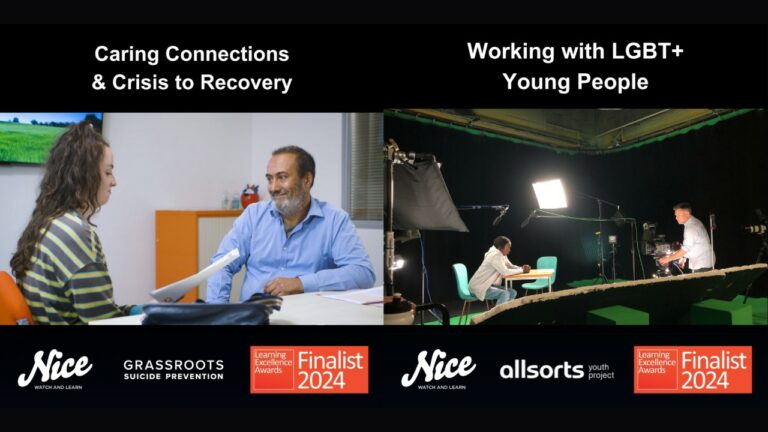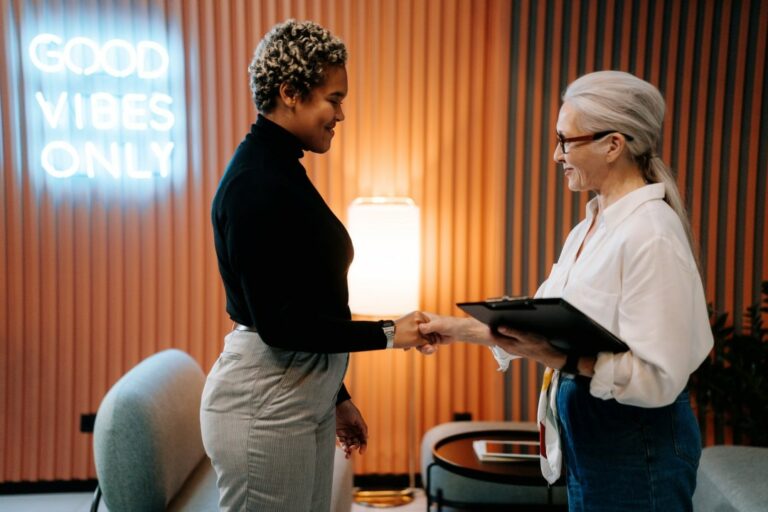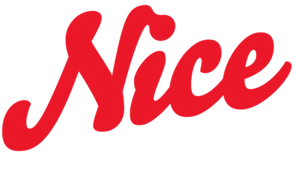This 
In the first of these three articles I asserted that you get the best value for money when producing video drama by using this priority order for investment:
1. script
2. actors
3. director
4. production values
In this article I will focus on production values. What are they? Are they worth having? And if you want high production values, how are they achieved?
What Difference do Production Values Make to a Drama?
Production values are the difference between filming on your phone and filming with a crew of top technicians with lights and lenses and costume and makeup and grips and dollies. Production values can add a lot in terms of gloss and beauty to make the video more of a pleasure to watch, but the secret is that their contribution to the learner experience is not directly proportional to how much budget they use.
We produced 3 films from the same short script in 3 different visual styles, each with a different set of production values. We cut them together so that the story begins in one style, hops to another and ends on the third.
Abstract Space
The first part of our clip was shot against plain black drapes. This is a very low budget treatment. If your film is chiefly about interactions between people why pay out on sets or locations? The productivity of video filming is about as high as it can be in a plain studio. With everything shot with just about the same lighting and in the same place you save time not having to shift expensive cast, crew and equipment about the place. And in a sound-proofed studio you won’t get any noisy interruptions. (Although our example was not shot in a studio – as we filmed it back to back with the location shoot).
There are advantages to this treatment. Some years ago we were commissioned by e-learning provider Smile-on to produce a major drama about communication in dentistry. Smile-on had found that wherever they’d filmed previously viewers were distracted by some incorrect detail about the procedure or the equipment. By putting our characters in the clearly imaginative space of a white studio with minimal and abstracted props we persuaded the audience to suspend their disbelief and to focus on the drama and learning points. And there’s the additional bonus that something shot in this style will age better than a film shot realistically.
Personally I enjoy the hard core aspect of this kind of treatment. Realism has become something that we all expect without question. When you’re making a workplace drama it seems obvious to try to re-create your world, your workplace in the video. But in a sense your workplace doesn’t exist. It’s a different world depending upon whose eyes you are looking through. And the way we communicate such different points of view is called fiction. Are we filming what goes on in a workplace or what goes on inside people’s heads? Both of course, but it’s a rhetorical question worth reflecting upon.
Guerrilla Style
The next part of our scene is filmed in guerrilla or Dogme style. In case you’re not aware Dogme is the name of a movement of filmmakers formed in Denmark in the 1990’s. It took movies back to basics, insisting that a film would not be granted Dogme status unless the producers follow their 10 restrictive rules including only filming with available light, the camera being hand held, the actors wearing their own clothes and so forth. Full rules on Wikipedia.
This is another cost cutting approach. The production won’t be as fast as the plain studio treatment as we still have to move our team around a real location and tackle the usual problems arising from being in an environment that’s not entirely in our control. When filming on location communication between client and producer remains more challenging than in the very controlled environment of a studio. With learning content compliance is very important and we always work to get client sign off as we go. Despite all my caveats, cutting out lighting, costume and props saves a good chunk of budget and also speeds up the work. But does it look too cheap? Too gloomy?
A Quality Production
In its final part the clip changes to a high production values version of the scene. What more does it bring? What do you think?
To describe it objectively: more care is paid to every element of the image, the performance and the sound. The video has more polish. Here’s how it’s achieved:
Costume – the costume is chosen and styled to match the character. The stylist will consider the corporate culture of the setting, how to enhance the character and story, what looks good on the actor and what looks good on camera. Several costume options are brought to the set and tried out for approval of the director and client.
Lighting – the space is lit carefully and skilfully to produce a stylish look and to help tell the story by creating mood, suggesting time or day, setting and so forth. At its most basic the lighting will clearly delineate the elements of the scene that are most crucial to the story and learning points.
Direction – a higher budget allows time to film the scene from more angles so that the story and its intricacies can be told with more precision, and potentially be more engaging and entertaining. The director and actors have enough time to develop the characters and their interactions.
Grip – with enough time and budget we can add some camera movement – by putting the cameras on tracks and wheels. Done well, this excites the eye and improves user engagement.
Make-up – even on our most basic productions we usually apply a little anti-shine, but with a dedicated makeup artist on set the actors can be made up to give the characters more depth. As well as making the women actors’ make-up suit their character, a makeup artist can do such things as make someone look tired or sparkling or even bruised. In addition, having a dedicated pair of eyes focussed on how the faces and hair are looking frees up the director better to focus on the performances.
Production management – all of these elements take time and effort to schedule and organise to ensure a synergistic use of resources. As I often observe, the earlier in the production process you invest the more return you get from your budget. The absolute best way to get the biggest bang for your buck is to design a video solution that perfectly leverages the resources available to the ends you have in mind.
And of course, one can also improve production values at the editing stage. Good editors, sound design and music licencing all take time and money.
Of course there are not just three ways to shoot a scene, there are many, many more – but I hope this example gives you an insight into where to put the emphasis of your investment.
Read the first article on ‘Video Drama For Learning’ here.
Read the second article on ‘Video Drama Scriptwriting’ here.







